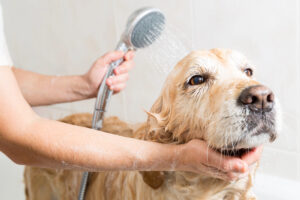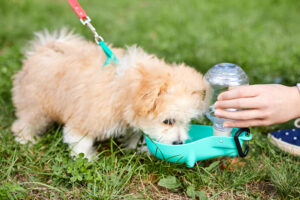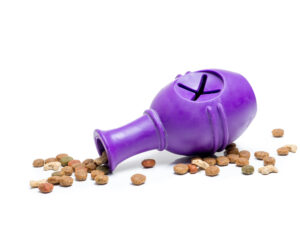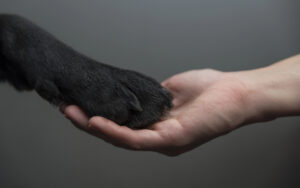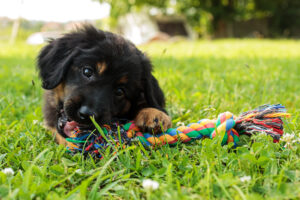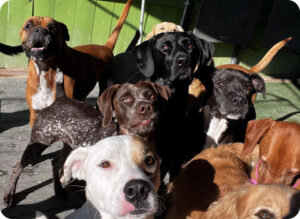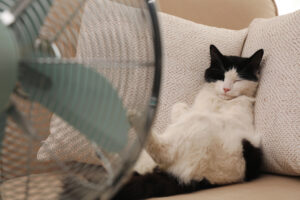Dog nail trimming is an important part of keeping your furry friend happy, healthy, and looking good. The only problem? Nail trimming can be an anxiety-inducing experience for many dogs. If you’re a pet parent dealing with a pup that is less than enthusiastic about this part of dog grooming, you’ve come to the right place.
With services including grooming for both dogs and cats, we at Fon Jon Pet Care have gained plenty of tips and tricks to help dog nail trimming go smoothly for you and your dog. And remember, if you’re not comfortable trimming your dog’s nails yourself, you can always bring her to us!
Why You Shouldn’t Skip Nail Trims
We know that as a pet parent, you may dislike dog nail trimming just as much as your beloved pup does! You don’t want to do anything to your dog that may hurt her, and it’s so easy to do this when clipping nails. However, it’s important to put aside these fears and clip your dog’s nails because letting them grow can lead to unhealthy side effects.
While not life-threatening, letting your dog’s nails grow too long can lead to pain. It can even cause irreversible damage to your dog, although this is rare. For example, long nails can damage your dog’s paw by causing splayed feet and a loss of traction when walking. Long nails can also lead to a dog’s paws becoming deformed or injured tendons. This damage happens because when overgrown nails hit the ground, added pressure is placed on your dog’s leg and foot.
In addition to this potential damage, letting your dog’s nails get too long may lead to the quick becoming long. This makes nail trimming more difficult and makes cutting the quick during trimming more likely. When you regularly trim your dog’s nails, the quick will recede, making maintenance easier and improving your dog’s wellbeing.

Start As Early As Possible
To help reduce the uneasiness that usually comes with the nail trimming process, we recommend that you start handling your puppy’s paws and trimming her nails as early as possible. This will get her used to having her paws handled and the process of trimming.
You can start by handling your puppy’s body in general. This will allow you to handle her once she’s older without her having an issue with it. In addition to this, you should familiarize your puppy with every aspect of nail trimming. This includes the equipment itself and the way her paws will be manipulated during trimming. Taking the time to do this will show your puppy that getting her nails trimmed is not scary or painful. You can also introduce treats while doing this so she’ll create positive associations with this activity! For example, show your puppy a dog nail trimmer or dog nail grinder and follow up with a treat so your puppy will understand that this tool isn’t something to be scared of.
If you’re here because your dog is an adult that hates getting her nails trimmed, we have tips for you too!
Listen to Your Dog
Whether your dog is a puppy used to having her paws handled or manipulated or an adult who doesn’t care for having her paws touched, paying attention to the signs your dog is giving you will help make dog nail trimming a better experience.
There are some obvious ways that your dog will show discomfort, like trying to move her paws away, but you also need to keep an eye out for subtle signs as well. If your dog is consistently yawning while you try to trim her nails, this may be a sign of stress.
You know your dog best, so if you feel that she’s overwhelmed, it’s best to stop even if you’re not finished. You can pick up the trimming another day and this will show your dog that her comfort matters to you. If you’ve made progress in getting your dog to accept nail trimming, continuing even when she’s stressed may derail this progress.
What You’ll Need
This is obvious, but the most important things you’ll need are clippers or grinders made specifically for dog nail trimming. There are a variety of options for dog nail trimming, such as scissors, grinder tools, and guillotine clippers. When it comes to which tool you choose to use, there’s no right or wrong option; just use whatever works best for you and your dog!
When trimming your dog’s nails, it’s also a good idea to keep some styptic powder, baking flour, or some other type of clotting powder nearby in case a nail is cut too short. You should have a plan of how to stop the bleeding before you even begin the nail trimming process because trimming the quick is always a possibility during nail trimming.
If trimmed too short, dog nails will bleed excessively. To stop bleeding, hold pressure on the nail for a full two minutes, then relieve pressure and apply the styptic powder.
Less is More
Pet parents may feel almost as much anxiety about trimming their dog’s nails as their dogs feel about getting their nails trimmed. This is usually because of the idea that a dog’s nails need to be trimmed short. However, it’s better (and safer!) to be conservative when trimming your dog’s nails. We recommend trimming nails until they’re just above the floor. This will reduce the problems that can be caused by your dog having nails that are too long as well as avoid cutting the quick, which is the nail’s blood supply.
Dogs use their nails for traction when running or walking, so cutting nails too short could lead to your dog slipping and sliding.
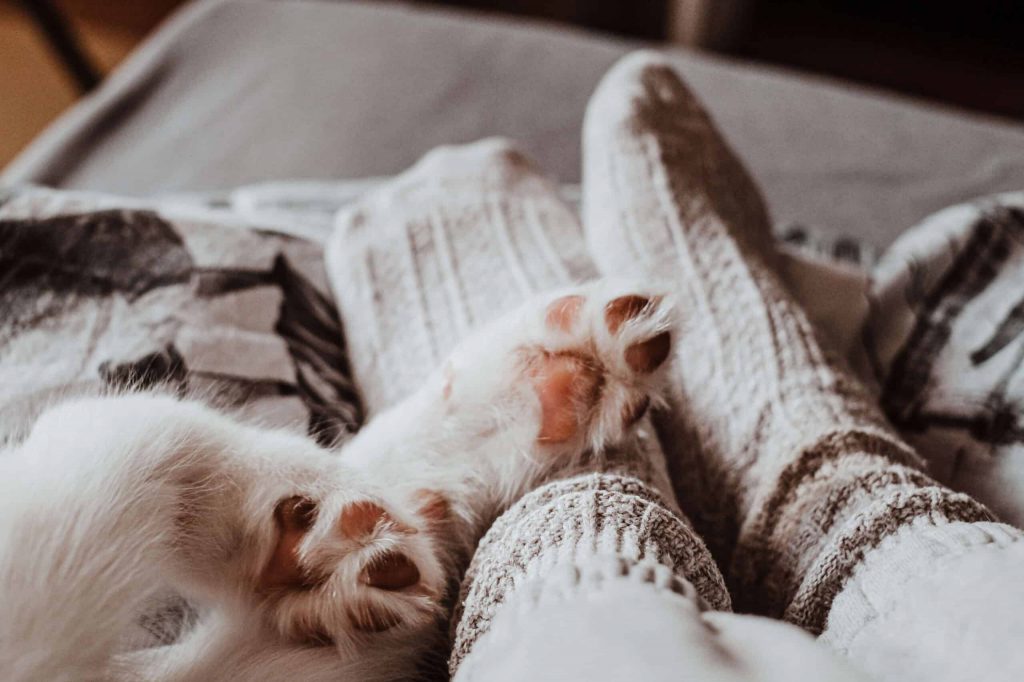
How to Trim
When the time to trim finally comes, we recommend starting by gently but firmly picking up the paw you’ll be working on. Holding the paw, gently place your thumb on the pad of a toe while placing your index finger on the top of the toe, on the skin just above the nail. Once you’re holding the toe, push your thumb slightly up and backward on the pad while pushing your index finger forward. This will extend the nail and making dog nail trimming easier. Finally, make sure none of your dog’s fur is in the way of the nail before you begin trimming.
Clip just the tip of your dog’s nail and clip straight across. Don’t forget to trim her dewclaws as well! A good rule of thumb to avoid unintentionally cutting your dog’s nails too short is to avoid clipping past the natural curve of the nail. Going past this point puts you at risk of clipping the quick, causing pain and bleeding.
Final Thoughts
Some thoughts to keep in mind when dog nail trimming is that your dog is not intentionally trying to give you a hard time if she’s difficult during trimming. Even though it’s for your dog’s own good, nail trimming can be a scary process for her that she doesn’t understand. Reacting with empathy can actually make the trimming process easier by changing how you react to your dog’s willfulness or stubbornness. Dogs also have extra nerve receptors in their paw pads meant to protect them when walking. This makes their paws very sensitive to touch and adds to why they may be so difficult during trimming. Keep this in mind the next time you trim your dog’s nails and it may make the process easier!
Dog Nail Trimming at Fon Jon Pet Care
We hope that these tips will help make dog nail trimming easier for you and your furry friend. However, if you still feel uncomfortable trimming your dog’s nails yourself, Fon Jon Pet Care is here to help! If you’re looking for a dog groomer in San Diego or other pet care services such as dog boarding, daycare, or training, you can rely on us. We know how important your pets are to you, which is why they’re important to us as well. We always treat our clients with love and care!
In addition to this, keeping your dog groomed and her nails trimmed on a regular schedule will keep her looking and feeling better!
Contact Fon Jon Pet Care at 1-858-490-2117 or visit our site today to make an appointment.







